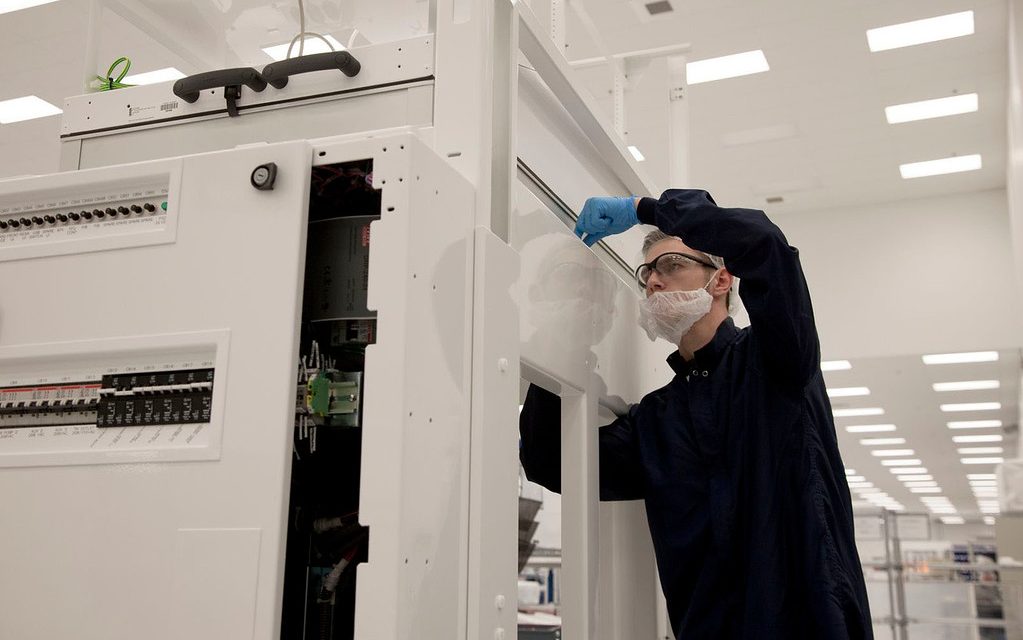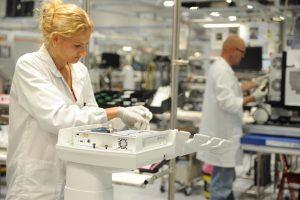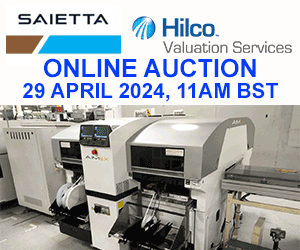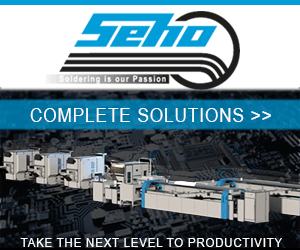EMSNOW CLASSIC: Executive Interview: Celestica’s Rob Mionis


Two years later, these pioneers started on an acquisition spree that built the company into a global manufacturing force. Headquartered in Toronto, Canada where the first plant was located, it now has around 27,000 employees with 20 manufacturing and design facilities worldwide, and 2017 revenue at US $6.1billion. .
CEO Robert Mionis joined Celestica nearly three years ago with a mandate to increase profitable growth. During that time, he has been singularly focused on becoming an essential technology partner with companies in highly regulated industries like aerospace and medical; he has led Celestica in a transformational realignment of all its efforts, centered on its Advanced Technology Services group.
According to Mionis’ last shareholder letter, it’s going well.
“I am pleased with the progress we made in our strategy throughout 2017, despite a challenging business environment. As we look to the future, we are focused on accelerating this progress, and building on the fundamental priorities I established when I first joined Celestica, including:
- Grow and diversify our customer and product portfolios through organic growth and acquisitions
- Increase margins in our ATS end market while continuing to invest in capabilities and targeted end markets
- Generate strong annual free cash flow and adjusted return on invested capital
- Improve execution, and increase productivity and simplification throughout the organization.”
EMSNOW sat down with Rob for this exclusive EMSNOW executive interview:
EMSNOW: Celestica has a 20-year history in outsourced manufacturing and is one of the “founding fathers” of the industry. How has the company evolved over time?
A: Including our time as part of IBM Canada, we actually have more than 75 years of technology OEM experience. This has allowed us to establish a reputation for proven manufacturing expertise and innovation. Over those 75 years we’ve naturally seen a lot of changes – not only in technology and manufacturing processes, but in our company as well.
Today, our customers expect us to be more than a supplier. They’re seeking a true partner that helps unlock untapped potential by delivering design, manufacturing, after market services and supply chain solutions. They want a full lifecycle solutions provider that can help them drive innovation in their products, realize efficiencies and reduce costs. We’ve transformed our company to ensure we can deliver on our customers’ expectations.
Another way we’ve evolved is in the markets we serve. Over the years we’ve diversified to support different markets including aerospace and defence (A&D), industrial, healthcare and smart energy. I’m pleased with the strong progress we’ve made in this area.
In A&D, for example, we’re an EMS market leader and our solutions can be found throughout commercial aircraft around the world in the form of advanced avionics, guidance controls, power distribution and cockpit electronics. We’re also continuing to expand our capabilities. One example is our recent acquisition of Atrenne Integrated Solutions, a leading designer and manufacturer of ruggedized electromechanical solutions serving multiple markets, primarily for military and commercial aerospace applications. This acquisition expands our capabilities and enhances our leadership position in the A&D market.
EMSNOW: There appears to be a heavy emphasis on innovation at Celestica. Could you tell us more about the role innovation plays in Celestica’s operations and how it’s helping the company grow?
Innovation is key to everything we do at Celestica and it can take many forms for us. It could be helping a customer design a new product; it could be finding a more efficient way to manufacture a solution for a customer; or it could be building a better supply chain for a customer.
One example of our innovation at work is our Joint Design and Manufacturing (JDM) offering. Our Global Design Services Team invests in product roadmaps, developing leading-edge solutions in anticipation of customer requirements. We currently offer over 100 products in Storage, Server, Switching and Converged JDM Hardware platforms. Our solutions help our customers navigate and thrive amid rapid market disruption. We have evolved to become a source of innovation for our customers, enabling them to bring next-generation solutions to market faster and more cost effectively than ever before.
Another great example is our involvement in the Refined Manufacturing Acceleration Process Network (ReMAP). We established ReMAP in 2014 to boost Canadian innovation by establishing stronger ties between industry, academia and government. The network now spans 40 organizations and has helped small Canadian companies commercialize their innovative ideas faster and get them out to a global market.
EMSNOW: One of the themes I noticed in your blogs is that a company cannot be innovative on its own – it needs to collaborate with suppliers and customers. How does that process work and what additional benefits are derived from collaborating?
Getting big, innovative ideas to market isn’t a simple process. At a minimum, it requires months of collaboration between engineering, design and market teams. Our team at Celestica has years of experience in developing innovative solutions, optimizing manufacturing and streamlining the supply chain. We leverage that knowledge to help our customers get their innovative products to market more efficiently.
Our customers are looking across industries and throughout their supply chains to drive smarter solutions for the future. Companies need to embrace an ecosystem of partners that bring together the right expertise and know-how to offer the market a range of innovations that have the potential to change the way we do things. For us, this means becoming more deeply entrenched in our customers’ markets, listening intently to their needs and providing deep insights that help that lead to actionable solutions.
There are a variety of ways we can collaborate with our customers. There’s our JDM offering, which we mentioned earlier. There’s our Customer Innovation Center in Silicon Valley where customers can collaborate directly with our experts – on-site and around the world. Really it’s up to our customers how they want to work with us.
We have years of proven technology expertise and in a world where the Internet of Things is making every company a technology company, our technology know-how gives our customers an important advantage. We have solutions that span the entire product design lifecycle including product design, manufacturing, supply chain optimization and aftermarket support.
EMSNOW: What do you believe sets Celestica apart from other companies in the EMS industry?
What has always been a differentiator for Celestica is our people. Earlier in my career, I had the opportunity to experience what it was like to work with Celestica as a customer. In all my dealings with Celestica in my former companies, I have always been impressed with the people that I have met. Celestica has a well-earned reputation for the quality of its people, its operational excellence, and its overall integrity in the way the company deals with its customers, suppliers and employees.
The Celestica team finds the way through insight and the relentless pursuit of innovation and efficiency. We have a wealth of experience in helping our customers solve complex product, technology and business challenges. This is what drives us to bring our best every day.
This to me is what sets Celestica apart.
EMSNOW: Celestica has a footprint in all major global regions. How do you view the outlook for global EMS over the next 2-3 years?
Maintaining a strategic global footprint has been one of the keys to our success. We have Centers of Excellence throughout the world, which allows us to deliver high quality solutions to market quickly and reliably for our customers. Speed to market is more important than ever and our customers appreciate the fact we have a global network that offers flexibility and gives them a competitive edge. In addition, through our global network, customers can optimize total landed cost and ensure a competitive solution from design through to final delivery.
Flexibility will be just as much of an imperative in 2-3 years as it is today. Supply Chains need to keep pace and be sufficiently agile to capture fleeting upside opportunities or to mitigate fast-moving risks.
EMSNOW: Many Tier 1 EMS companies have expanded into non-traditional EMS services and in some cases their own branded products. What is Celestica’s future in this regard?

We’re not just a company that builds product for customers. We’re also a design leader that thrives on collaboration. We believe companies want a true partner that can help them stand out in increasingly competitive markets.
EMSNOW: What issues do you expect to be the most challenging for Celestica and the EMS industry over the next few years? How can companies like Celestica overcome these issues?
The EMS industry has changed significantly in recent years. In all our markets, change is now a constant. I see our industry as being transformed by three powerful forces – rising customer expectations, emerging technologies, and global innovation and competition.
These forces are challenging both us and our customers to be more nimble, adaptive and innovative in delivering products, services and experiences on a globalized scale, optimized for customers’ expectations. OEMs are constantly assessing core and non-core activities, which results in new supply chain and outsourcing models that provide cost productivity and help our customers compete in a global marketplace.
Staying on top of new technologies will also be a challenge for the industry but I also see this as a great opportunity. Investment in the Internet of Things (IoT), artificial intelligence and the cloud will continue to grow significantly. EMS providers need to embrace these technologies internally so they can streamline their own operations, while gaining insights that will help their customers innovate faster.
Take AI for example. It’s being incorporated into all sorts of technologies, including consumer products like smart home devices and mobile phones. Over the next several years every solution and service is likely to incorporate some form of AI. EMS providers will need to be able to leverage technology such as AI to improve their decision making, boost productivity and enhance the overall experience for their customers.
EMSNOW: Is there anything else you would like to say to EMSNOW readers?
It’s an exciting time to be in EMS. The pace of innovation has grown exponentially in recent years and will continue to grow. New technologies and models – like cloud, IoT and flexible consumption – are dramatically transforming our industry. Companies are going to need to leverage technology to help them navigate this increasingly complex environment. Innovating in this new environment is more important than ever and EMS providers will need to look for bold new ideas from their employees, partners and other industries.












